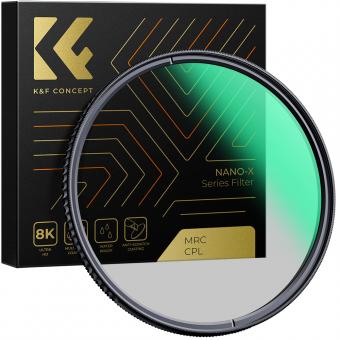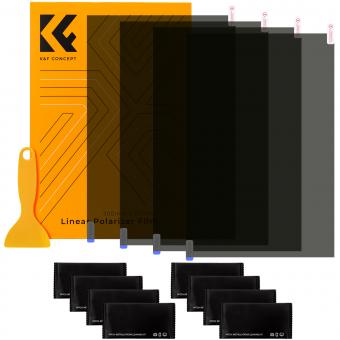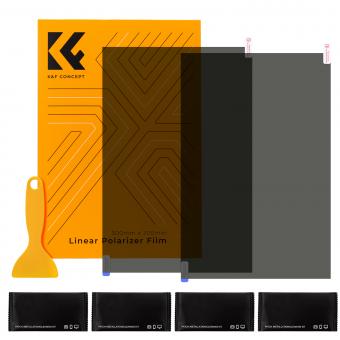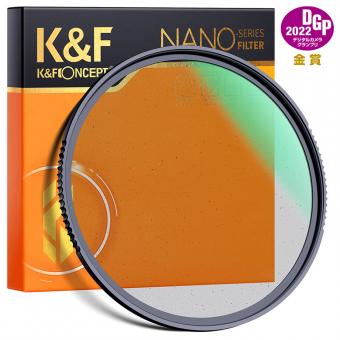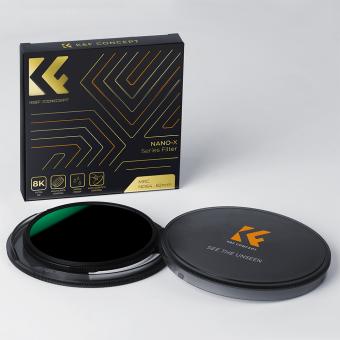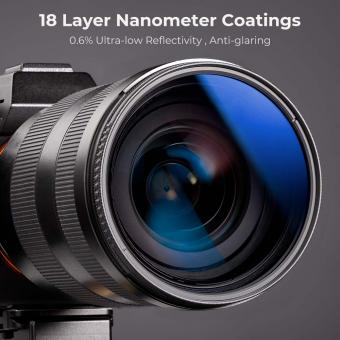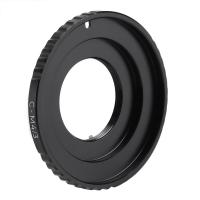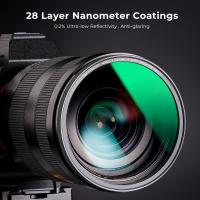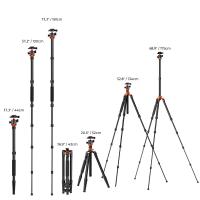What Is The Purpose Of A Polarizing Filter ?
The purpose of a polarizing filter is to reduce or eliminate glare and reflections from non-metallic surfaces such as water, glass, and foliage. It achieves this by selectively blocking certain polarized light waves while allowing others to pass through. This helps to enhance color saturation, improve contrast, and increase overall image clarity in photography and videography. Additionally, polarizing filters can darken skies, making clouds stand out more prominently. They are commonly used in landscape photography, outdoor portraits, and any situation where reducing unwanted reflections and enhancing image quality is desired.
1、 Reducing glare and reflections in photography and videography.
The purpose of a polarizing filter is to reduce glare and reflections in photography and videography. Glare and reflections can be caused by various sources such as sunlight reflecting off water or glass surfaces, or artificial light bouncing off shiny objects. These unwanted reflections can significantly degrade the quality of an image or video, resulting in loss of detail and contrast.
A polarizing filter works by selectively blocking certain polarized light waves. When light reflects off a surface, it becomes polarized, meaning the light waves align in a specific direction. A polarizing filter is designed to only allow light waves that are aligned in a particular direction to pass through, while blocking the rest. By rotating the filter, photographers and videographers can adjust the angle at which the filter blocks the polarized light, effectively reducing or eliminating the glare and reflections.
In addition to reducing glare and reflections, polarizing filters also have other benefits. They can enhance color saturation and contrast, making images appear more vibrant and vivid. They can also improve the overall clarity and sharpness of a photograph or video by reducing atmospheric haze. This is particularly useful when shooting landscapes or outdoor scenes.
Furthermore, polarizing filters can be used creatively to achieve specific effects. For example, they can darken the sky, making clouds stand out more prominently. They can also enhance the visibility of underwater scenes by reducing the surface reflections on water.
In the latest point of view, polarizing filters continue to be an essential tool for photographers and videographers. Despite advancements in post-processing software and editing techniques, the ability to capture high-quality images and videos directly in-camera remains crucial. Polarizing filters provide a practical and efficient solution to reduce glare and reflections, allowing photographers and videographers to achieve the desired results without relying heavily on post-processing.
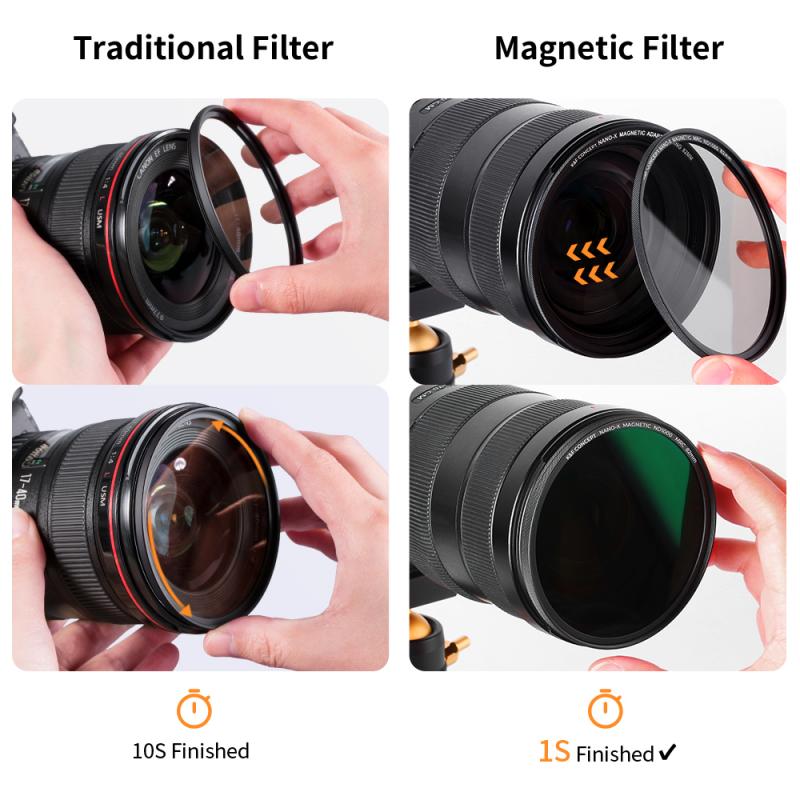
2、 Enhancing color saturation and contrast in outdoor scenes.
The purpose of a polarizing filter is to enhance color saturation and contrast in outdoor scenes. This filter is commonly used in photography to reduce glare and reflections from non-metallic surfaces such as water, glass, and foliage. By selectively blocking certain polarized light waves, the filter helps to eliminate unwanted reflections and allows for clearer, more vibrant images.
When light reflects off a non-metallic surface, it becomes polarized, meaning the light waves align in a specific direction. This polarized light can cause glare and reduce the overall clarity and color saturation of a photograph. However, by using a polarizing filter, photographers can effectively control the amount of polarized light that enters the camera lens.
By rotating the filter, photographers can adjust the angle at which the filter blocks polarized light. This allows them to selectively reduce or eliminate reflections and glare, resulting in images with enhanced color saturation and contrast. The filter also helps to darken the sky, making clouds appear more pronounced and colors more vibrant.
In addition to enhancing color saturation and contrast, polarizing filters can also improve the overall image quality by reducing atmospheric haze. This is particularly useful in landscape photography, where distant objects may appear less sharp due to atmospheric conditions. By reducing the amount of scattered light, the filter helps to increase the clarity and detail of distant subjects.
Overall, the purpose of a polarizing filter is to enhance the visual impact of outdoor photographs by reducing reflections, increasing color saturation, and improving overall image quality. It is a valuable tool for photographers looking to capture vibrant and captivating images in various outdoor settings.

3、 Minimizing atmospheric haze and improving overall image clarity.
The purpose of a polarizing filter is to minimize atmospheric haze and improve overall image clarity. When light reflects off non-metallic surfaces such as water, glass, or foliage, it becomes polarized, meaning the light waves align in a specific direction. This polarization can cause unwanted glare and reflections, reducing the clarity and contrast of an image.
A polarizing filter consists of a special optical material that only allows light waves vibrating in a specific direction to pass through. By rotating the filter, photographers can adjust the angle at which the filter blocks or allows light to pass through, effectively reducing or eliminating the polarized light. This helps to minimize glare and reflections, resulting in clearer and more vibrant images.
In addition to reducing glare, a polarizing filter also helps to enhance colors and improve overall image quality. By reducing atmospheric haze, the filter allows for better contrast and saturation, making colors appear more vivid and true to life. This is particularly useful when photographing landscapes or outdoor scenes, where the filter can help to bring out the natural beauty of the surroundings.
Furthermore, a polarizing filter can also be used to darken skies, making clouds stand out more prominently and creating a more dramatic effect in landscape photography. By selectively blocking certain polarized light waves, the filter can deepen the blue tones of the sky, resulting in a more visually appealing image.
It is important to note that the effectiveness of a polarizing filter can vary depending on the angle of the light source and the position of the photographer relative to the subject. Therefore, it is necessary to adjust the filter accordingly to achieve the desired effect.
In conclusion, the purpose of a polarizing filter is to minimize atmospheric haze and improve overall image clarity. By reducing glare, enhancing colors, and darkening skies, the filter helps photographers capture more visually appealing and vibrant images.

4、 Controlling and managing light transmission for specific creative effects.
The purpose of a polarizing filter is to control and manage light transmission for specific creative effects. This filter is commonly used in photography and cinematography to enhance the quality of images and videos by reducing glare and reflections, increasing color saturation, and improving overall image contrast.
One of the primary functions of a polarizing filter is to reduce unwanted reflections from non-metallic surfaces such as water, glass, and foliage. By selectively blocking certain polarized light waves, the filter helps to eliminate glare and create clearer, more vibrant images. This is particularly useful when photographing landscapes, where reflections from water or shiny surfaces can often hinder the desired outcome.
Additionally, a polarizing filter can enhance color saturation and contrast. By selectively filtering out certain polarized light waves, the filter can make colors appear more vibrant and rich. This is especially beneficial when capturing outdoor scenes, as it can make blue skies appear deeper and more saturated, and foliage appear greener and more vibrant.
Furthermore, a polarizing filter can also be used to darken the overall exposure of an image. By reducing the amount of light entering the camera, the filter allows for longer exposure times, which can be useful in situations where a slower shutter speed is desired, such as when photographing flowing water or capturing motion blur.
In recent years, the purpose of a polarizing filter has expanded to include the management of light transmission for specific creative effects. Some photographers and filmmakers use polarizing filters to create unique and artistic images by selectively controlling the polarization of light. This can result in interesting patterns, textures, and reflections, adding a creative touch to the final composition.
In conclusion, the purpose of a polarizing filter is to control and manage light transmission for specific creative effects. By reducing reflections, enhancing color saturation, improving contrast, and allowing for creative manipulation of light, this filter is an essential tool for photographers and cinematographers seeking to capture stunning and visually appealing images and videos.


